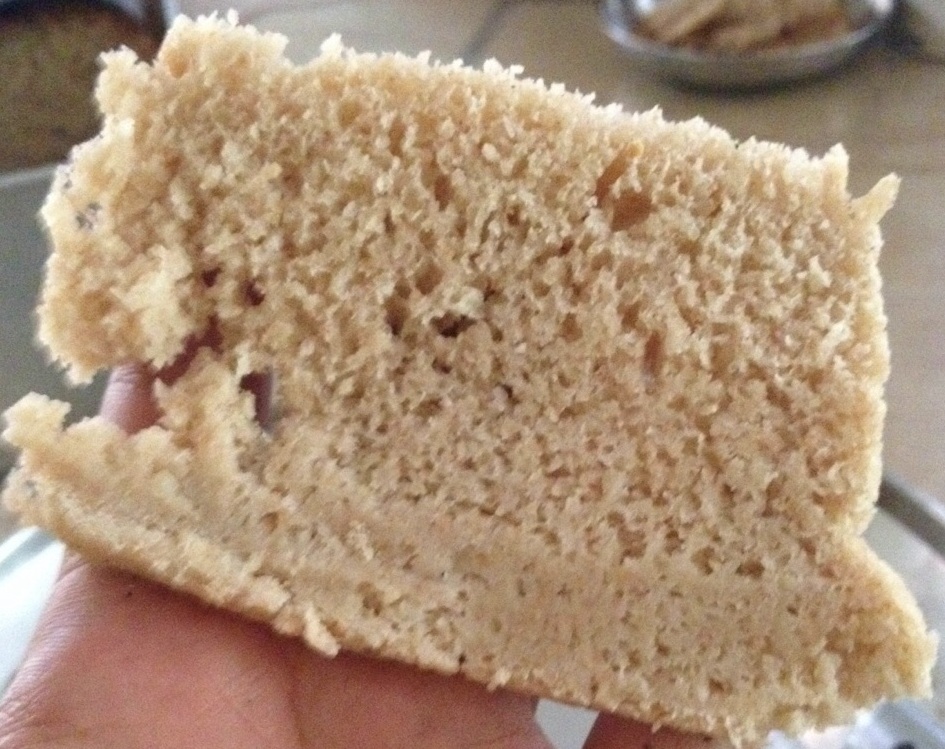
i baked a bread using the following mixture.
250g whole wheat flour
250g Bread flour/White flour
100g Semolina flour
used Honey in the yeast mixture.Kneaded the dough for 20-25 mins. After kneading the dough was soft and a bit sticky. It doubled in Volume in an hour.
Shaped the dough and added it to a Bread tin.
kept the tin in the Refrigerator overnight it had nearly doubled in Volume by the next Morning.
preheated the oven to 200C and baked for 25 mins at 250C. The bread had burnt from the top so took it out and let it cool for half an hour.
after i took the bread out it felt undercooked from the bottom.
i also had a hard time slicing the bread as it was soft.
it looks the bread could not cook from the bottom.
1) Should the bread tin be turned towards a side after 10 mins of Baking?
2) are Whole wheat based bread softer always ?
3)what is the best knife to cut bread and that too thin slices ?
4) Is my baking temp/time correct?
5)Should the bread be proved/raised 3 times ?
Appreciate any help.
Thank you.
When I, on the rare occasion, do bread in a loaf pan i'll take it out of the pan and return it to the oven for the bottom to get done.
Perhaps this'll help.
..but the burnt top is telling you that baking this loaf at 250C is way too high, especially if you have a sugar-rich dough. It might be better to bake at 220/(200 fan)℃ for 15-20 minutes, then a further 20-25 minutes at 200/180℃ until the loaf is dark brown.
You are right to say that the dough looks undercooked - no great surprise if it was only in the oven for twenty-five minutes - but it is, perhaps, also over-proved. As many threads on the forum have pointed out, doubling in volume is not a be-all-and-end-all. King Arthur Flour ran a great little test bake to demonstrate when and why tin loaves are ready for the oven:
http://www.kingarthurflour.com/blog/2014/06/20/the-bread-also-rises/
Hope it helps.
i used 1 Teaspoon of Honey.
and then baking or turning up the heat to 250°C leaves the oven in preheating mode and that usually means it is on high until it reaches 250°C that alone might burn the crust. Might want to try preheating to 250°C and then turning the oven down to 220° for baking. I think this is the major problem with this bake. Correct the oven temp and the other problems should fix themselves.
Shiny or light coloured pans can also leave the bread burnt on top and raw on the bottom, correction is to place loaf on the bottom shelf for baking, closer to the heat source. Or find darker pans.
Tip bread out of pans immediately after removing from the oven, if it sticks in the pan, general rule is that the bread is not done. Cover the loaf with a protection tent of foil and return to the oven to finish the bake. Maybe lower the shelf a notch. Also if bread falls out and is pale, put back in the oven without the pan, on the rack to finish baking.
If a dough rises too high and baked, cutting a fluffy crumb can be problematic. I don't think this applies with this loaf. If a serrated bread knife doesn't work it might be that the burnt crust is too hard and the loaf tears as the crumb is still warm and hasn't set yet. Letting the loaf stand and cool longer makes it easier to cut as crumb moisture moves to the crust to soften it and the starch in the loaf gels and is firmer.
You might prefer to cut thick warm slices and tear the bread apart with fingers while eating. For thin slices let the loaf cool completely, at least several hours on an elevated wire rack.
thank you for replying.
i will now "try" and wait a little longer for the bread to cool.
yields different result. The darker the colour of your pan, the browner the crust. I have always baked my sandwich bread with the one on the right and they brown up nicely. It is a non-stick aluminium pan. The one on the left is only good for fruit cakes, no hope on browning anything to be honest. From the look of your bread, it looked to me as if the bottom heating element of your oven was not working or it could be human error too, check the setting to make sure both top and bottom heat are on. Also, try to do this although it is the hardest part of bread baking......you gotta wait for your bake to cool completely before slicing, 2 hours will be fine. If you can't, try leaving your house for a while, LOL.
Hope this helps!
I regularly bake a honey/spelt loaf with about 20g of honey in each loaf - they always come out much darker due to the caramelisation of the honey, so you might be mistaking that for the "burnt" look on-top.
However, baking it at 250C for 25 minutes will burn the bread - as I found out this morning when I forgot to turn the oven down... I normally start at 250C for 10-12 minutes, then turn it down to 210C for another 20-25 minutes depending on the bread. Opened the oven door to the aroma of toast this morning )-:
(Still, they sold at cost-price as "well fired loaves" at the local market, so all was not lost!)
-Gordon